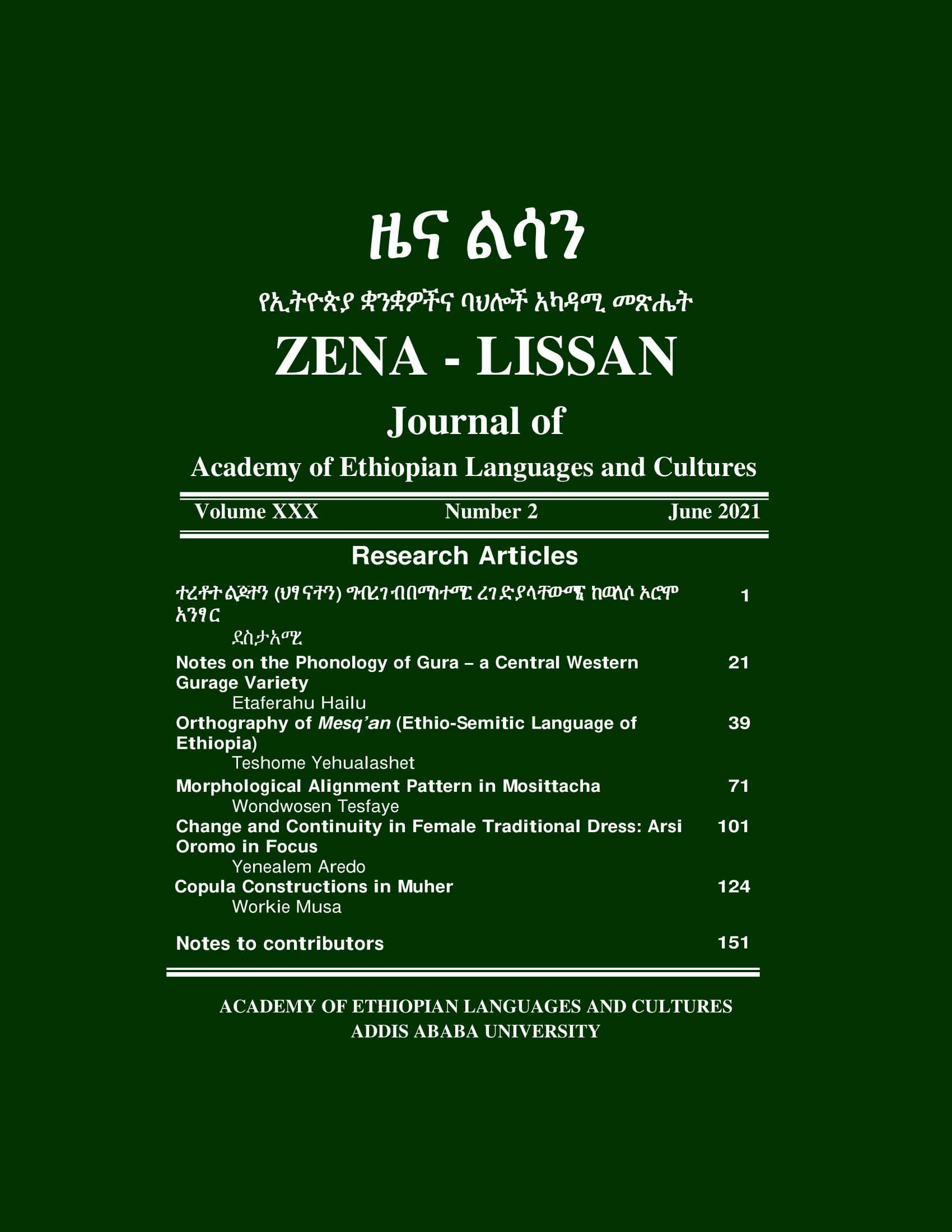Morphological Alignment Pattern in Mosittacha
Abstract
Abstract
In this paper, I discuss morphological alignment pattern in Mosittacha, an East Cushitic language spoken in Diraashe District, southern Ethiopia. In Mosittacha, the subject of (in) transitive clause is morphologically case marked only when non-subject constituent is focused. However, a subject of (in) transitive clause occurs in its citation form when a subject is focused. The data for the present study was collected from six language helpers. The technique used for data collection is elicitation. The collected data were organized, analyzed and written up in the light of Comrian approach. The findings of the study show that there are two remarkable deviations from the common typological alignment pattern. The first deviation is subject marking: the focused subject is unmarked and the non-focused subject is marked. The second deviation is the reversal of marking: the accusative is unmarked and hence termed as absolutive. In the monotransitive constructions, Mosittacha exhibits either absolutive or neutral alignment of agreement whereas in the ditransitive constructions the language exhibits indirective alignment.
Keywords: [morphological alignment, transitivity, neutral alignment, absolutive alignment, indirective alignment]

